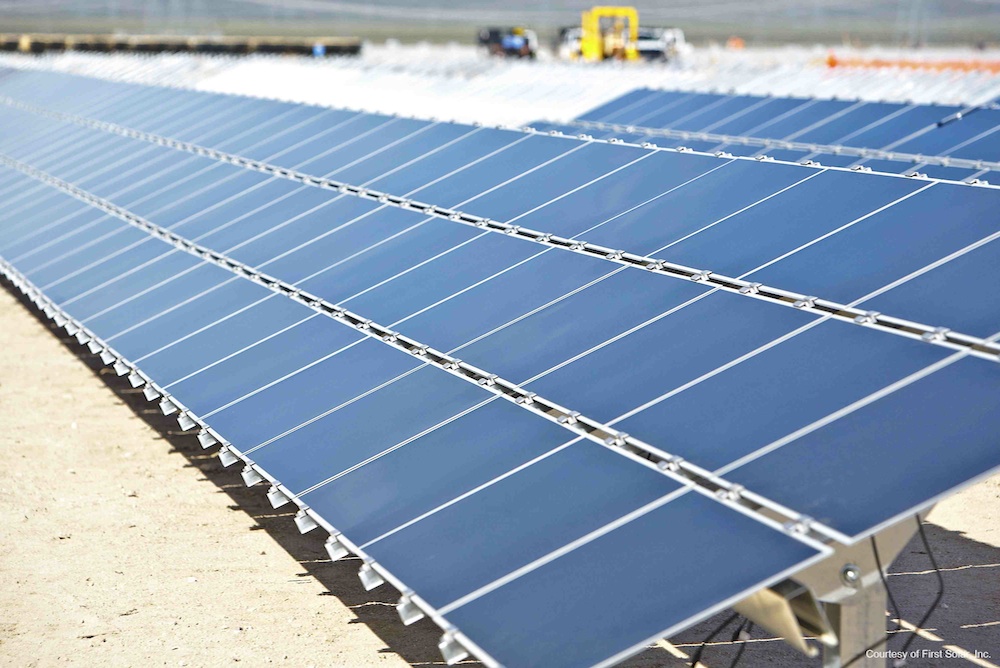Blog Post
Choosing the Right Solar PV Panel for the Job

Manufacturers have made incremental increases in PV efficiency over the years but the basic technology found in today's modules hasn't changed much. Here's a refresher on some popular PV technologies and a few products from our GreenSpec product guide that use them.
In the early 1990's power from the grid was dirt cheap and PV modules were expensive and used primarily off-grid. Rising energy costs, environmental concerns over fossil fuel use, geopolitical instability, and increased rebates and other incentives have helped increased demand for PV worldwide. Now most PV is tied to the grid and it's become almost mainstream, especially in Europe. The PV technologies supplying this power--crystalline and thin-film--are now more efficient and more sophisticated, but the basic technology hasn't changed much.
Crystalline silicon: the original PV
We've all seen, or own, crystalline silicon modules. About an inch or two thick and usually mounted on roofs, they're the original PV technology and are still considered the most reliable. These modules are made up of individual mono- or polycrystalline PV cells wired together, but a less common ribbon technology is also available.
Poly- or monocrystalline?
Yes, the silicon used to make the cells does matter. Monocrystalline silicon is grown into uniform crystals, whereas polycrystalline silicon is melted and the crystal typically formed by seeding, resulting in a less organized crystal structure and a less efficient cell. Crystalline PV modules are the workhorses of the PV industry with a long track record or performance and reliability. But growing crystals takes time and money, and each cell has to be created individually, so monocrystalline PV ends up being more expensive. Ribbon PV is unique, using a wire run through molten silicon to pull out polycrystalline ribbons. Currently, Evergreen Solar is the only company using this process.
You get what you pay for...
The efficiency of monocrystalline PV is around 15%–16%, with some exceeding 20%; polycrystalline hovers between 13% and 15%. As you can see, there is quite a difference between 13% and 20% efficiency, but some high-quality polycrystalline panels are now approaching the performance of standard monocrystalline. (Ribbon PV is currently around 13%).
A couple of standout performers are the monocrystalline modules from SunPower, whose E20 series achieves 20% efficiency (available in late 2011 in Europe and early 2012 in the U.S.) and Suntech's HiPerforma, which reaches 15% efficiency. Both of these products claim superior low-light performance, a trait normally reserved for thin-film PV.
Thin Film
Thin- film PV is can be found in panels and in flexible sheets used on metal roofs or building integrated PV (BIPV). These products are made by depositing extremely thin layers of amorphous silicon (a-Si), cadmium telluride (CdTe), copper indium selenide (CIS), or copper indium gallium selenide (CIGS) onto plastic, glass, or metal substrates. Because they aren't made cell by cell, thin-film production is much faster and less expensive, but they use rare earth minerals and have lower efficiencies of only 6%–9% (a-Si), 11% (CdTe), and 9%–13% (CIS)/CIGS).
SUPPORT INDEPENDENT SUSTAINABILITY REPORTING
BuildingGreen relies on our premium members, not on advertisers. Help make our work possible.
See membership options »CdTe leads production
Though all thin-film PV technologies work, First Solar's CdTe modules operate at 11% efficiency, which is high for thin-film, and they are the least expensive PV to produce. This combination of solid performance and low cost has made First Solar one of the largest producers of PV in the world. The downside to CdTe is it is made with cadmium, a toxic heavy metal.
Thin-film or crystalline?
As noted thin-film is less efficient than crystalline, but tested efficiency is not everything. Thin-film works better in the heat and under low-light conditions, so it captures light in the early morning and evening and when it's cloudy. Standard crystalline modules don't. In fact a crystalline modules's performance can drop significantly if only a couple of cells are shaded. According to Mike Taylor, director of research at the Solar Electric Power Association (SEPA), thin-film produces 5%–10% more power annually per kilowatt, but crystalline is 25%–30% more efficient so during peak hours you can produce more power with fewer modules in less area, often with lower installation costs.
Lacking universal performance standards
You won't find third-party performance standards that cover the full range of PV performance and durability. According to Taylor, to get a UL stamp of approval in the U.S. a PV module just has to be within 10% of the manufacture's stated performance. But according to Larry Sherwood, project administrator for Solar America Board for Codes and Standards (SolarABCs), PV modules should produce power within 3% of manufacturer claims for crystalline modules (the tolerances for thin-film are usually higher), and meet quality standards IEC 61215 or 61646 for crystalline or thin film, respectively.
To further ensure you're getting what you pay for, look for a high warranted minimum power rating--the amount of power the company guarantees the module will produce--or a high per-watt PTC (PVUsa test conditions) rating, which is considered more of a "real-world" performance than the STC (Standard Test Conditions) rating. Typically several points lower than the STC rating, PTC is used by the California Energy Commission to determine rebates and can be a useful way to compare modules.
Both technologies are viable, both are improving annually, and the price is dropping, so this is a good time to look more seriously at PV. We'll be adding more PV products to our GreenSpec Product Directory in the upcoming weeks. So check back!
Brent Ehrlich is the products editor at BuildingGreen, Inc.
Published June 23, 2011 Permalink Citation
(2011, June 23). Choosing the Right Solar PV Panel for the Job. Retrieved from https://www.buildinggreen.com/blog/choosing-right-solar-pv-panel-job



Add new comment
To post a comment, you need to register for a BuildingGreen Basic membership (free) or login to your existing profile.